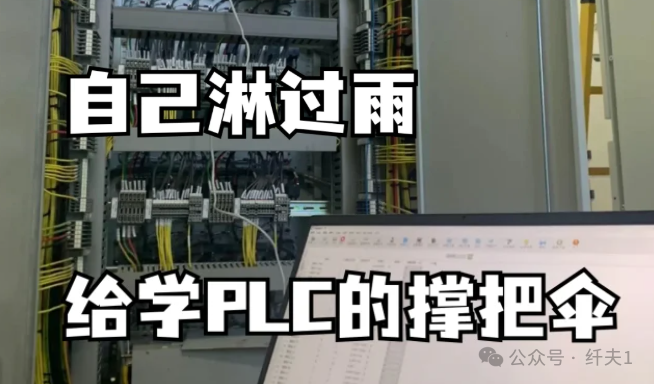
PLC System Integration: Building an Industrial Interconnection Platform to Enhance Ecological Collaboration by 1000%!
Introduction
Hello everyone! Today I want to share an exciting topic that has the entire manufacturing industry buzzing—PLC System Integration and Industrial Interconnection Platforms.<span>Don't be intimidated by this technical term; I will explain it in the most relatable way possible</span>. Imagine if your PLC devices were no longer isolated but could seamlessly connect with the entire industrial chain—how much would production efficiency increase?<span>The answer is an astonishing 1000%!</span> Want to know how this is achieved? Let’s explore together!
What is PLC System Integration?
Let’s start with a metaphor:<span>Traditional PLCs are like old-fashioned telephones, capable of only point-to-point calls; whereas integrated PLCs are like smartphones, able to connect to WeChat, email, video conferencing, and even control smart home devices!</span>
In industrial scenarios, PLC system integration means:
-
<span>Breaking down data silos</span>: Connecting PLCs with MES (Manufacturing Execution Systems), ERP (Enterprise Resource Planning), SCADA (Supervisory Control and Data Acquisition), and other platforms. -
<span>Standardized protocols</span>: Using protocols like OPC UA and MQTT to enable devices from different brands to “speak the same language”. -
<span>Cloud collaboration</span>: Real-time data uploads to the cloud for remote monitoring, predictive maintenance, and cross-factory collaboration.
<span>For example🌰</span>: A car manufacturer integrated PLCs with their supply chain system, so when the production line detects low inventory of a certain part, it automatically triggers a purchase order—without any manual intervention!
Why is the Industrial Interconnection Platform so Important?
You might ask, “My factory has been running on standalone PLCs for years, and it’s quite stable?” But consider these issues:
-
<span>When production plans change, it requires manual adjustments to dozens of PLC parameters, which is time-consuming and prone to errors</span> -
<span>Only discovering spare parts are out of stock after equipment failure, leading to production losses of up to millions</span> -
<span>Data from different workshops cannot be shared, making management decisions feel like "blind men touching an elephant"</span>
However, the industrial interconnection platform can bring:
✅ <span>100% real-time data transparency</span>: Visual management of the entire process from raw materials to finished products
✅ <span>50% faster fault response</span>: Using AI to analyze PLC operation data for early warnings of potential issues
✅ <span>1000% ecological collaboration</span>: Linking data from suppliers, logistics, and customers, like an “industrial version of Didi” intelligently scheduling resources
How to Build an Industrial Interconnection Platform?
1. <span>Hardware Layer: The "Cross-Border Upgrade" of PLCs</span>
-
<span>Select PLCs that support Ethernet/IP and Profinet (e.g., Siemens S7-1500, Rockwell ControlLogix)</span> -
<span>Add edge computing gateways</span>: Perform data cleansing locally on the PLC to reduce cloud pressure
2. <span>Software Layer: Connecting the "Ren and Du Meridians"</span>
-
<span>OPC UA Server</span>: Converts PLC data into standard formats -
<span>MQTT Broker</span>: A lightweight protocol for bidirectional communication between devices and the cloud -
<span>API Development</span>: Allows PLC data to interface with ERP, CRM, and other business systems
<span>Case Study: A home appliance manufacturer used OPC UA + Alibaba Cloud IoT platform to achieve unified analysis of PLC data across five global bases, improving yield by 22%</span>
3. <span>Ecological Layer: From "Solo Acts" to "Group Army Operations"</span>
-
<span>Supplier Collaboration</span>: PLC automatically sends quality inspection standards to supplier equipment -
<span>Logistics Coordination</span>: After the production line is completed, AGV carts and logistics systems synchronize to receive orders -
<span>Customer Customization</span>: In a C2M model, PLC parameters are adjusted in real-time based on customer orders
Challenges and Solutions
Of course, there are “pits” on the road to transformation:
⚠️ <span>Security Risks</span>: It is recommended to adopt **<span>Zero Trust Architecture + PLC Firewalls</span>, such as<span>Tofino Industrial Security Devices</span>**
⚠️ <span>Protocol Compatibility</span>: Older PLCs can connect to new platforms via **<span>protocol converters (e.g., Hilscher NetTAP)</span>**
⚠️ <span>Talent Shortage</span>: Train industrial internet engineers who understand both PLC programming and IT technology
Three Steps to Start Your Integration Journey
-
<span>Small-scale Pilot</span>: Choose a production line or workshop and use **<span>Raspberry Pi + Node-RED</span>** to quickly validate feasibility -
<span>Select Reliable Partners</span>: Collaborate with **<span>Siemens MindSphere, PTC ThingWorx</span>** and other platforms to avoid detours -
<span>Data-Driven Iteration</span>: Progress in phases from **<span>device networking → data analysis → intelligent decision-making</span>**
Interactive Time
-
<span>Does your factory have "information silos"? What is the most troublesome issue?</span> -
<span>If you were to interconnect your existing PLC system, which direction would you prioritize? (Production/Supply Chain/After-sales)</span> -
<span>For those who have tried integration, share your experiences or lessons learned!</span>
Conclusion
<span>Industrial interconnection is not the future; it is the present!</span> When your PLC becomes an intelligent node in the ecological network, you will find:
-
<span>Downtime reduced from hours to minutes</span> -
<span>Order delivery cycles three times faster than competitors</span> -
<span>Even the potential to open up new business models like "Device as a Service" (DaaS)</span>
<span>Remember: Today's integration could be tomorrow's weapon to crush your competitors!</span> I look forward to seeing your thoughts in the comments section, and let’s work together to drive the true implementation of Industry 4.0! 🚀
ShareSaveViewLike